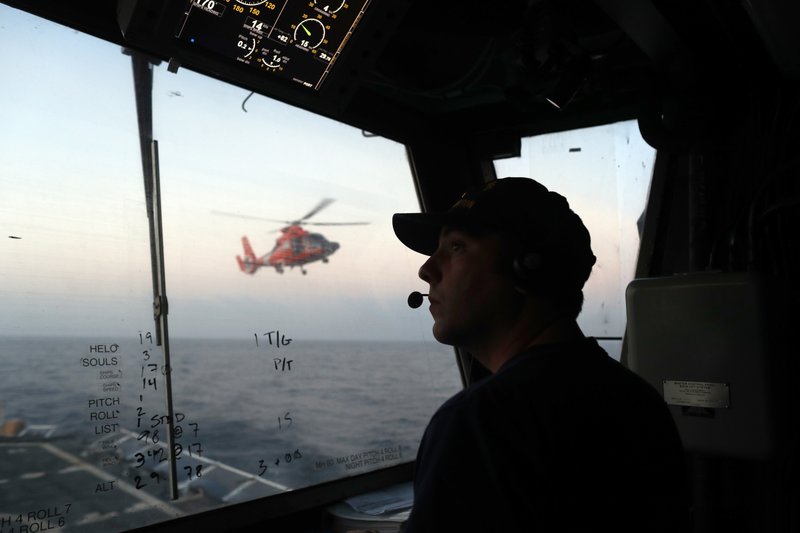SAN DIEGO -- The U.S. and Mexican governments are sparring over immigration and trade, but the two countries are joining forces on the high seas like never before to go after drug smugglers.
The United States, Mexico and Colombia will target drug smugglers off South America's Pacific coast in an operation that is scheduled to begin Sunday and last for the foreseeable future, Coast Guard officials said.
U.S. Coast Guard Adm. Paul Zukunft teased the idea during a recent defense conference in San Diego, saying the United States "can't do it alone."
"It's no secret we are besieged with the flow of drugs from Latin America to the United States," he said.
U.S. and Mexican forces have routinely worked together at sea, but the latest effort "marks a significant step in terms of information sharing, collaboration and cooperation between the United States, Mexico and other partner nations," according to the Coast Guard.
The Americans and Mexicans will exchange intelligence more freely than in the past, which could mean sharing information on well-traveled routes for drug smugglers or preferred paths for specific smuggling organizations, Coast Guard spokesman Alana Miller said.
They also will board the other country's vessels to view operations and gain expertise, Miller said. In 2015, three members of the Mexican navy boarded a Coast Guard vessel during a port call in Huatulco, Mexico, but this operation calls for more frequent exchanges, and they will be at sea.
The operation will last "for the foreseeable future as long as it's working for everyone," Miller said. "It's sort of open-ended."
Traffickers over the years have increasingly turned to the sea to move their illegal goods, traversing an area off South America that is so big, the continental United States could be dropped inside. Smugglers routinely move cocaine out of countries like Colombia to Central America and Mexico by using fishing boats, skiffs, commercial cargo ships -- even homemade submarines.
The operation comes after five years of record seizures by the Coast Guard. But U.S. officials say that because of limited resources, the U.S. military's smallest service still catches only about 25 percent of illegal shipments in the Pacific.
Even so, the Coast Guard annually seizes three times the amount of cocaine confiscated at the U.S.-Mexico border. Yet ocean smuggling has not grabbed lawmakers' attention like the flow of drugs across the nearly 2,000-mile-long land border, where President Donald Trump's administration wants to spend billions to build a continuous wall.
As much as 20 percent of the cocaine moving through South America ends up in the United States, and most of it lands first in Mexico from seafaring smugglers. The hope is boats will be stopped before their shipments are loaded onto Mexican trucks that fan out on various routes bound for the U.S. border, authorities said. Large boats can cart 20 tons of cocaine or more.
Information for this article was contributed by Elliot Spagat of The Associated Press.
A Section on 03/30/2018

